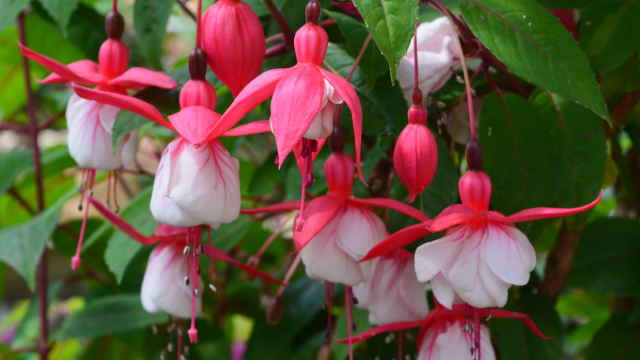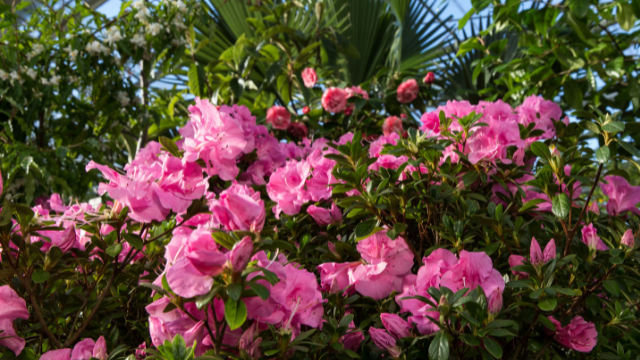Temperature House
In the last, north-facing side house (Kalthaus/Temperature house, house 11), you can enjoy flowering ornamental and wild plants all year round. In the summer months, the focus is on the genus Fuchsia, of which some very interesting wild species are shown, as well numerous hybrids and selections. In winter, numerous potted plants from milder climates find a temporary shelter here and delight from December onwards with their first and increasingly abundant blooms.
Fuchsias in summer, temperature house in the winter months
The plants from areas with a Mediterranean climate do not require high temperatures in winter, but they must be kept frost-free and sufficiently moist, because this is the time of their main growth period. They originate from South Africa, central Chile, California, the European Mediterranean area, and the hardwood areas of eastern Australia and Tasmania. In summer they need fresh air and are largely replaced by potted plants popular with us. New and proven varieties of elegant fuchsias, pelargoniums with aromatic leaves and fragrant salvias make this house a summer flowering splendor.
In winter, House 11, like Victoria House, serves as a cold house for the overwintering of frost-sensitive woody plants. However, it is especially dedicated to two traditional and varietal winter ornamental plants of Southeast Asian origin: camellias and azaleas. In the north-facing antler fern pavilion, which is separated from house 11 by a glass wall, there is a small collection of antler ferns (Platycerium species), dainty moss ferns (from the moss fern family Selaginellaceae) and lycopodiums (Lycopodium).




